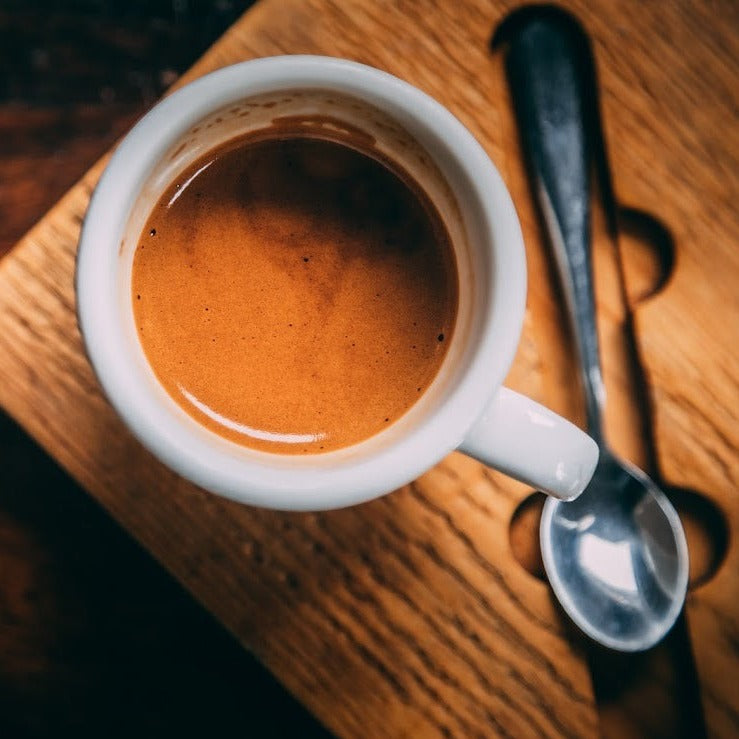Why SOE Single Origin Espresso Is Loved Among Baristas
Why SOE Single Origin Espresso Is Loved Among Baristas
Blog Article
Comprehending Coffee Beans: the Trip From Coffee to Blended Coffee Beans

The Origins of Coffee: An International Viewpoint
While you might consider coffee as a contemporary staple, its origins map back centuries, intertwining with societies around the world. The story begins in Ethiopia, where legend says a goat herder called Kaldi discovered the stimulating impacts of coffee beans after discovering his goats frolicking energetically after eating them. This triggered interest, bring about coffee's spread to Arab traders who cherished the brewed beverage. By the 15th century, it got to Persia, Egypt, and Turkey, where coffeehouses ended up being social centers for discussion and society.
As trade paths increased, coffee made its method to Europe in the 17th century, rapidly obtaining appeal. Each society added its one-of-a-kind twist to coffee prep work, enriching its history.
Cultivation and Harvesting of Espresso Beans
As coffee's journey advanced, the focus moved to the farming and harvesting of certain bean ranges, specifically those used for espresso. You'll discover that espresso beans frequently come from Arabica or Robusta plants, each offering unique flavors. The excellent growing problems include high elevations and abundant, well-drained dirt, which enhance the beans' top quality.
During the harvest, selecting approaches differ. Timing is crucial; you desire to collect when the cherries reach peak ripeness for optimum flavor.
Once gathered, the beans are planned for handling, which is important in identifying their last preference. Understanding the growing and harvesting processes offers you insight right into what enters into your favorite espresso, enhancing your recognition for each mug.
Processing Techniques: From Cherry to Bean
Since you have actually learnt more about harvesting coffee beans, let's check out exactly how those cherries change into the coffee beans you like. You'll see exactly how various harvesting methods effect flavor, adhered to by the crucial actions of fermentation and drying out. Lastly, we'll damage down the milling and grading procedure that identifies your coffee's high quality.
Gathering Strategies Explained
When it comes to coffee, understanding harvesting methods is vital, considering that they directly impact the flavor and top quality of the beans you delight in. There are two primary approaches: selective selecting and strip picking. Selective selecting entails hand-picking just ripe cherries, guaranteeing you get the most effective top quality beans. This technique frequently causes a richer taste account, though it's more labor-intensive. On the various other hand, strip choosing methods collecting all cherries simultaneously, no matter perfection. While it's quicker and less expensive, this can lead to a mix of flavors, impacting the end product. Eventually, the option of gathering method can considerably affect your coffee experience, so it's worth recognizing exactly how those beans made it to your cup.
Fermentation and Drying
After gathering, the following action in processing coffee beans play a substantial duty fit their taste. You'll locate that fermentation is essential, as it helps damage down the mucilage bordering the beans, improving their preference account. Depending on the approach, this procedure can last from a few hours to a number of days, with differing results based upon temperature and humidity.
When fermentation is complete, drying out complies with, which is just as important. You can choose from sun-drying or mechanical drying out methods. Sun-drying allows the beans to take in flavors from the atmosphere, while mechanical drying out warranties regular wetness degrees regardless of climate. Proper drying is vital to protect against mold and maintain the beans' top quality, ultimately affecting your mug of coffee.
Milling and Grading Process
As fermentation and drying established the stage for flavor growth, the milling and grading process warranties that only the very best coffee beans make it to your mug. This phase includes removing the outer layers of the coffee cherry, consisting of the parchment and husk. After milling, the beans are sorted by size and weight, making certain an uniform quality. You'll discover that grading aids determine issues and categorize beans, which affects flavor and aroma. Top notch beans receive a higher quality, causing a richer coffee experience. As soon as rated, the beans are ready for packaging and shipping, protecting their special attributes. This thorough process is necessary for providing the outstanding taste you appreciate in every sip of your preferred mixture.
Roasting Strategies: Unlocking Taste Possible
When you roast coffee beans, the approach you choose can significantly affect the taste account. Comprehending the partnership in between time, temperature, and toasting methods is vital to disclosing the potential of your brew. Let's explore exactly how these components collaborated to produce the ideal mug.
Toasting Approaches Explained
While you may assume that all coffee roasting approaches yield the exact same outcomes, the truth is that each method reveals special taste potentials in the beans. Drum toasting uses their website a revolving drum to evenly disperse warmth, boosting caramelization and creating a well balanced flavor. Air roasting, on the other hand, flows warm air around the beans, promoting a lighter roast with noticable level of acidity.

Influence On Flavor Account
Different roasting methods not just affect the process yet also greatly affect the taste account of the coffee beans. Dark roasts, on the various other hand, bring out bold, smoky flavors, occasionally covering up the bean's special attributes. Comprehending these nuances assists you appreciate the artistry behind your cup of coffee, enhancing your overall experience with every sip.
Time and Temperature Factors
To launch the complete flavor potential of coffee beans, both time and temperature throughout the toasting process play significant duties. When toasting, you'll discover that higher temperature levels can swiftly establish flavors, yet if you hurry it, you may end up with burnt notes. Alternatively, reduced temperatures permit a more gradual flavor development, showcasing the beans' unique characteristics.

Timing is equally as essential; expanding the roast as well long can lead to a loss of acidity and illumination, while too brief a roast may leave the beans underdeveloped. Locating that wonderful place needs technique and experimentation. By changing these variables, you can expose the abundant, complex flavors concealed within each bean, developing a really impressive coffee experience.
The Art of Blending: Crafting Special Coffee Accounts

Begin by selecting a base coffee that supplies a solid foundation. Select corresponding beans to enhance certain taste notes. An intense Ethiopian bean can bring fruitiness, while an abundant Brazilian coffee includes body. Trial and error is vital-- do not hesitate to adjust proportions until you find your perfect profile.
As you mix, remember that each mix informs a tale. You're not simply making coffee; you're developing an experience. Take your time, taste often, and enjoy the journey of finding your signature mix - Single Origin Espresso.
Brewing Methods: Exactly How Preparation Affects Taste
Mixing coffee opens up a domain of flavor opportunities, however how you brew that mix can substantially affect your final cup. On the various other hand, a pour-over highlights the coffee's clearness and brightness, perfect for showcasing fragile notes.
Espresso, with its high pressure, creates a concentrated shot that emphasizes sweetness and crema. If you choose a lighter mixture, think about a cold mixture method; it yields a smooth, less acidic preference.
Readjusting variables like water temperature, grind size, and make time can change your coffee's profile. Embrace the art of developing to uncover the flavors hidden in your coffee blends.
The Future of Coffee: Sustainability and Technology
As the coffee industry develops, sustainability and advancement are becoming vital for resolving environmental difficulties and conference customer needs. You'll see that more coffee business are embracing green methods, from sourcing beans fairly to applying lasting farming techniques. These shifts not only help the world yet also enhance the high quality of the coffee you appreciate.
You might see developments like naturally degradable product packaging and water-saving developing methods that decrease waste. Advanced innovation, such as blockchain, is also coming to be prominent, ensuring openness in the supply chain, which allows you to map your coffee back to its beginnings.
In enhancement, investing in neighborhood neighborhoods and supporting farmers with reasonable profession initiatives fosters a much more sustainable coffee ecological community. As you sip your following cup, bear in mind that your choices can add to a brighter future for coffee. By choosing for next lasting brands, you're not simply appreciating a beverage; you're making a positive effect on the world.
Often Asked Concerns
What Is the Difference In Between Arabica and Robusta Beans?
Arabica beans are smoother, sweeter, and have a higher level of acidity, while robusta beans are more powerful, a lot more bitter, and contain even more high levels of caffeine. When making your coffee., you'll observe these differences in flavor and fragrance.
How Does Altitude Affect Coffee Bean Flavor?
Altitude impacts coffee bean taste significantly. Greater elevations create beans with brighter level of acidity and complicated tastes, while reduced elevations usually produce beans that are larger and less nuanced. You'll notice these differences in your cup!
What Are the Wellness Conveniences of Drinking Coffee?
Consuming coffee can improve your power, enhance mental emphasis, and even improve physical performance. It's abundant in antioxidants, may decrease the threat of particular illness, and can promote a healthier metabolic process when eaten in moderation.
Can Coffee Beans Be Reused for Developing?
Yes, you can recycle coffee beans for developing, however the flavor could be weaker. If you enjoy experimenting, attempt recycling my link them in different methods, like chilly mixtures or contributing to shakes for an extra kick.
How Should I Shop Coffee Beans for Freshness?
To keep your coffee beans fresh, save them in a closed container in a great, dark location. Prevent exposing them to wetness, heat, or light, as these variables can promptly degrade their taste and fragrance.
Recognizing Coffee Beans: the Journey From Coffee to Blended Coffee Beans.
Now that you've found out about harvesting coffee beans, let's check out how those cherries change right into the coffee beans you like.When you roast coffee beans, the method you choose can drastically affect the flavor profile - Single Origin Espresso.While you may assume that all coffee roasting methods generate the very same outcomes, the fact is that each technique discloses distinct taste potentials in the beans.Different roasting techniques not only affect the process but also substantially influence the flavor profile of the coffee beans
Report this page